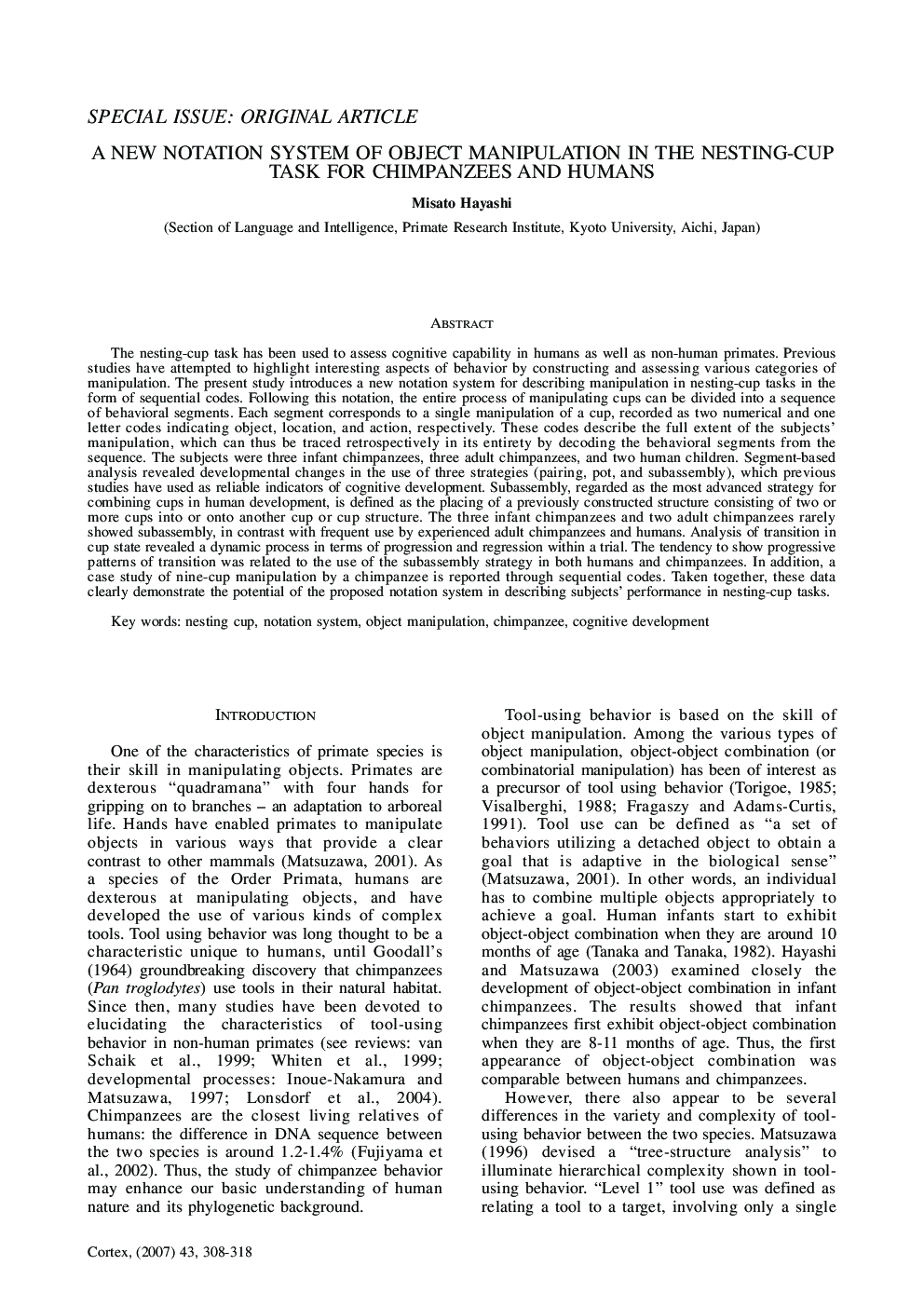| Article ID | Journal | Published Year | Pages | File Type |
|---|---|---|---|---|
| 942671 | Cortex | 2007 | 11 Pages |
The nesting-cup task has been used to assess cognitive capability in humans as well as non-human primates. Previous studies have attempted to highlight interesting aspects of behavior by constructing and assessing various categories of manipulation. The present study introduces a new notation system for describing manipulation in nesting-cup tasks in the form of sequential codes. Following this notation, the entire process of manipulating cups can be divided into a sequence of behavioral segments. Each segment corresponds to a single manipulation of a cup, recorded as two numerical and one letter codes indicating object, location, and action, respectively. These codes describe the full extent of the subjects' manipulation, which can thus be traced retrospectively in its entirety by decoding the behavioral segments from the sequence. The subjects were three infant chimpanzees, three adult chimpanzees, and two human children. Segment-based analysis revealed developmental changes in the use of three strategies (pairing, pot, and subassembly), which previous studies have used as reliable indicators of cognitive development. Subassembly, regarded as the most advanced strategy for combining cups in human development, is defined as the placing of a previously constructed structure consisting of two or more cups into or onto another cup or cup structure. The three infant chimpanzees and two adult chimpanzees rarely showed subassembly, in contrast with frequent use by experienced adult chimpanzees and humans. Analysis of transition in cup state revealed a dynamic process in terms of progression and regression within a trial. The tendency to show progressive patterns of transition was related to the use of the subassembly strategy in both humans and chimpanzees. In addition, a case study of nine-cup manipulation by a chimpanzee is reported through sequential codes. Taken together, these data clearly demonstrate the potential of the proposed notation system in describing subjects' performance in nesting-cup tasks.
